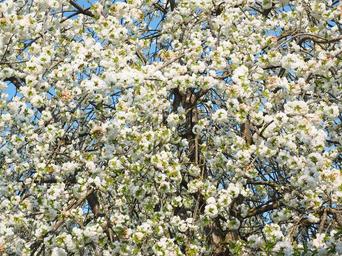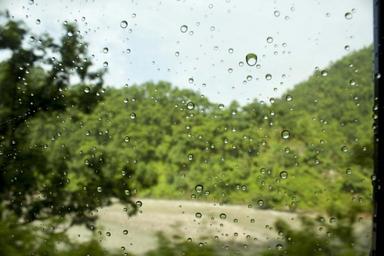Introduction: Understanding the Importance of Humidity for Plant Growth
Growing plants indoors can be a rewarding experience, especially when using a grow tent. However, maintaining the right humidity levels is crucial for optimal plant growth and health. Many growers rely on humidifiers to achieve the desired https://powerhousecc.org/a-step-by-step-guide-on-installing-the-black-decker-portable-air-conditioner/ humidity levels, but what if you don't have one? In this article, we'll explore various methods on how to raise humidity in a grow tent without a humidifier, ensuring your plants thrive even in less-than-ideal conditions.
Humidity affects everything from seed germination to flowering stages. Too little moisture can lead to stunted growth, while too much can promote mold and mildew. Therefore, understanding how to control humidity effectively is essential for every indoor gardener.
This guide will cover innovative techniques for increasing humidity levels in your grow tent without needing an elaborate or costly setup. Whether you're an experienced horticulturist or just starting out, these insights will help you create an environment conducive to healthy plant growth.
Why Is Humidity Important in Grow Tents?
The Science Behind Humidity and Plant Health
Plants breathe through tiny pores called stomata. These pores open and close based on humidity levels; they open wider when humidity is high, allowing for more efficient gas exchange. When humidity is low, plants may close their stomata to conserve water, which can stunt growth and reduce photosynthesis rates.
Effects of Low Humidity
Low humidity can result in:
- Wilting Leaves: Plants lose water faster than they can absorb it. Stunted Growth: Nutrient uptake slows down. Increased Pest Attraction: Some pests thrive in dry conditions.
Effects of High Humidity
Conversely, excessively high humidity can lead to problems like:
- Mold and Mildew: Fungi flourish in damp environments. Root Rot: Over-saturation causes roots to decay. Pest Infestation: Pests like spider mites prefer dry conditions; they may invade when conditions change.
How to Raise Humidity in a Grow Tent Without a Humidifier
1. Use Water Trays or Bowls
One of the simplest methods involves placing bowls or trays filled with water inside your grow tent. As the water evaporates, it increases the ambient humidity. For added effectiveness:
- Place multiple trays around the tent. Use larger containers for more surface area.
2. Hang Wet Towels or Sponges
Hanging wet towels or sponges inside the tent offers another way to boost moisture levels. The evaporation process will gradually increase humidity without any electrical devices involved.

3. Mist Your Plants
Regularly misting your plants with water not only raises humidity but also provides them with hydration directly. Here’s how you can do it effectively:
- Use a spray bottle with a fine mist setting. Mist early in the morning or late afternoon when temperatures are cooler.
4. Utilize Soil Moisture
Maintaining moist soil is vital for raising overall humidity. Ensure that your pots have good drainage but remain sufficiently hydrated:
- Consider using self-watering pots. Regularly check soil moisture levels with a hygrometer.
5. Create Microclimates with Plastic Wrap
Covering plants loosely with plastic wrap can trap moisture and create a microenvironment where humidity remains higher than in the surrounding airspace.
6. Introduce Large Plants or Foliage
Larger plants naturally transpire more water than smaller ones, contributing to overall humidity levels within the grow tent.
Exploring Other Methods To Enhance Grow Tent Humidity
7. Ventilation Adjustments
Proper ventilation allows airflow but can lower humidity if not managed correctly:
- Close vents partially during humidifying activities.
8. Grouping Plants Together
Placing pots close together allows them to share moisture through transpiration—a natural phenomenon where water vapor escapes from leaves into the air.
Understanding Your Environment: Temperature vs Humidity Balance
Temperature greatly influences how much moisture air can hold; warmer air holds more moisture than cooler air does.
9. Maintain Optimal Temperature Ranges
Keep temperatures between 70°F and 85°F (21°C - 29°C) during light cycles and ensure nighttime temperatures remain cooler but still within this range.
Tools and Gadgets That Can Assist You in Raising Humidity Levels
While our focus is on raising humidity without traditional humidifiers, several tools are worth considering that enhance efficiency:
10. Hygrometers: The Essential Tool for Monitoring
A digital hygrometer gives real-time readings of both temperature and relative humidity inside your grow tent—crucial for monitoring changes as you implement different methods.
| Type | Advantages | Disadvantages | |--------------|---------------------|---------------------| | Digital | Accurate readings | Requires batteries | | Analog | No power needed | Less precise |
Innovative Solutions Using Household Items
Many household items double as effective tools for enhancing indoor plant environments:
11. Kitchen Towels
Using kitchen towels soaked in water hung inside helps create localized higher-humidity zones rapidly expanding throughout the space over time
12. Rice Bowls
Place bowls filled with uncooked rice near plant bases; rice absorbs moisture from humid air during evaporation processes while slowly releasing it back into atmosphere over time
Additional Tips For Maintaining Ideal Growing Conditions
Monitoring both temperature & RH (relative humidy) should be key priorities as part of your regular maintenance schedule—consider these additional strategies for balance!
13. Adjust Light Cycles
Different light cycles affect transpiration rates; experiment by adjusting light exposure times accordingly based on observed results regarding plant behavior post-adjustments!
Dehumidifiers: A Double-edged Sword
While typically used to reduce excess moisture buildup—understanding how dehumidifiers work could also provide insight into their balance function within certain environments!
14. Do I Need One?
If you live in regions prone heavy rainfall/humidity then investing into quality dehumidifier could help maintain appropriate environmental controls by preventing condensation buildup during peak seasons!
15.Careful Placement Matters!
Positioning units away from direct airflow ensures that other areas aren't negatively impacted by sudden drops/changes due resulting drafts created nearby device operation itself!
The Role Of Airflow In Plant Health
Good circulation encourages stronger stems & healthier root systems while reducing stagnant pockets where molds thrive—here’s how best manage airflow effectively:
16.Install Fans Strategically
Small oscillating fans placed around corners promote even distribution without overwhelming weaker seedlings directly exposed aerodynamics!

17.Ventilation System Options
Consider installing passive intake vents allowing fresh outside air replenishment while exhausting stale indoor gases—find best locations based upon environmental needs!
FAQs About Raising Humidity in Grow Tents Without A Humidifier
Q1: What is the ideal humidity level for my grow tent?
Ideal relative humidity ranges between 40% - 70% depending on plant types at respective growth stages; consult specific species guidelines!
Q2: Can I use boiling water instead of cold?
Yes! Boiling creates steam quickly amplifying immediate effects however ensure proper safety practices are adhered prior handling hot materials around sensitive areas such as electronics etc..
Q3: Will misting damage my plants?
Careful timing & technique matter immensely—avoid excessive saturation especially during flowering phases which could lead bud rot otherwise!
Q4: How often should I check my hygrometer?
Regular readings throughout day typically suffice unless drastic weather changes occur prompting re-evaluation before need arises again later down road!
Q5: What's better – hanging wet towels or using bowls of water?
Both serve unique purposes; combining both options maximizes overall results achieved through synergistic effect achieved via evaporative processes occurring simultaneously!
Q6: Do I need any special training/knowledge before starting hydroponics/gardening indoors?
No formal education required although understanding basic biological principles behind plant cultivation will definitely enhance success rates long term so feel free research resources thoroughly available online/books published widely accessible today!
Conclusion
Creating an ideal growing environment requires careful attention to detail—including managing both temperature & relative humidity effectively! By implementing these strategies outlined above concerning "how to raise humidity in a grow tent without a humidifier", you'll ensure that your indoor garden flourishes beautifully regardless external climatic challenges faced daily life outside! Remember always monitor progress via reliable instruments – let experimentation guide decision-making processes moving forward ensuring continual improvement every step along way towards achieving ultimate success perfecting craft growing indoors successfully every time thereafter concluding journey begins anew each new planting endeavor undertaken thereafter leading next exciting chapter unfolding creatively fulfilling hobby pursued passionately over long term horizons shaping future visions realized ultimately alongside nature itself harmoniously balanced together intimately forevermore onward…
